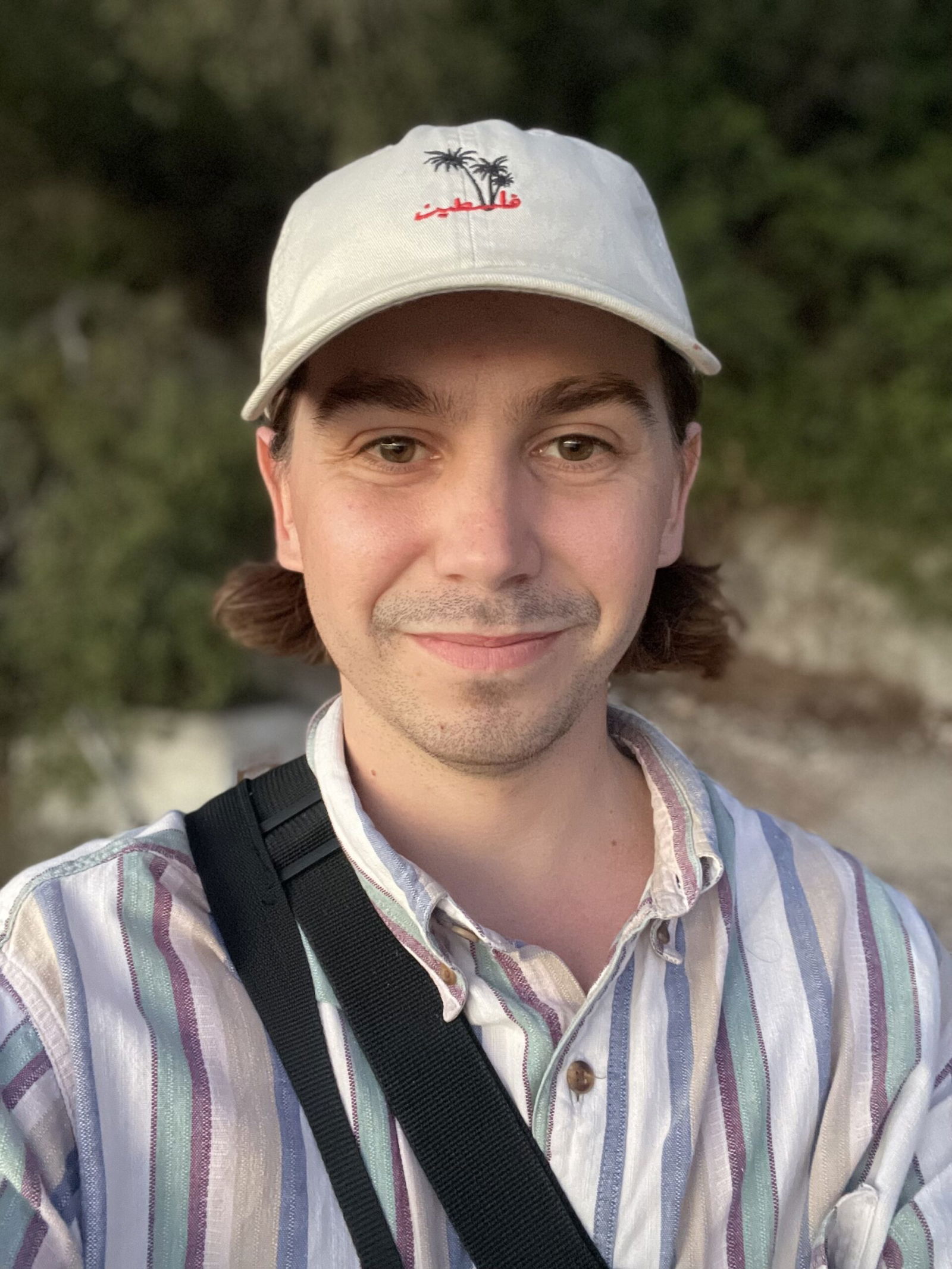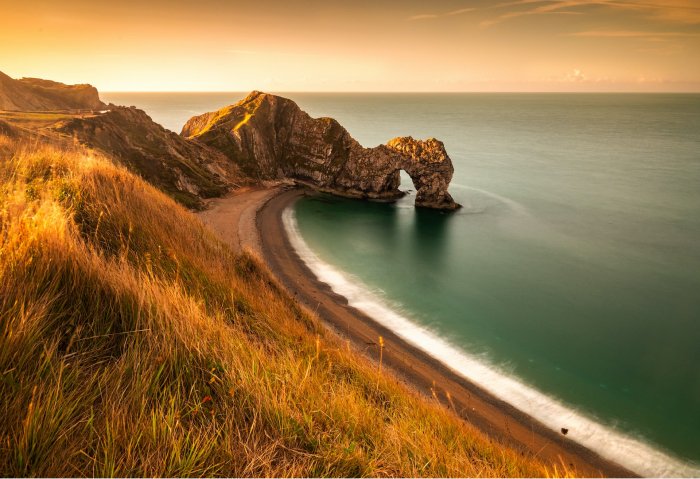The best infrared filter provides beautifully unique photos by keeping out visible light. So there are a few points to consider when looking for the top ones. We look at the different densities (colors) and effects produced when certain spectrums of light pass through. Plus, we also consider square vs circular infrared (IR) filters.
Our top choice is the Hoya R-72 infrared filter. This is a fantastic option you can pick up for a reasonable price. Hoya’s excellent understanding of optics produces good image quality. And it is a well-built circular filter that easily attaches to your lens.
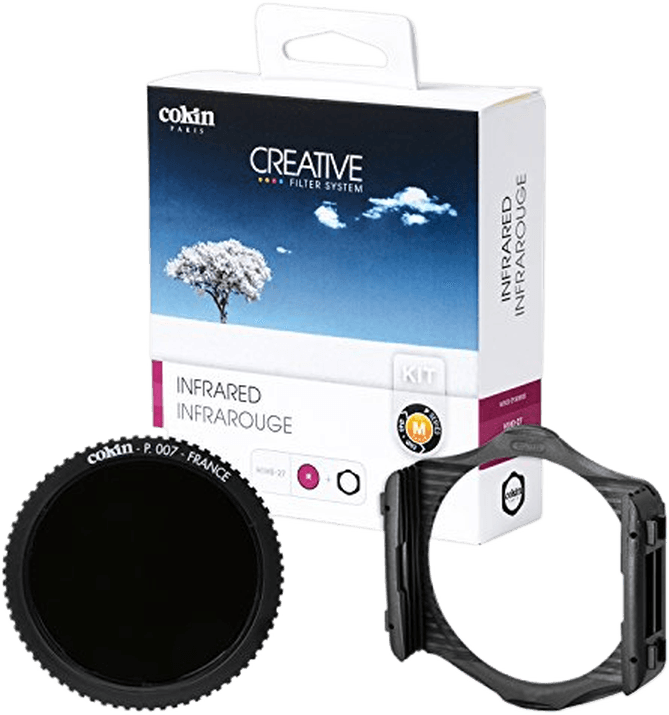
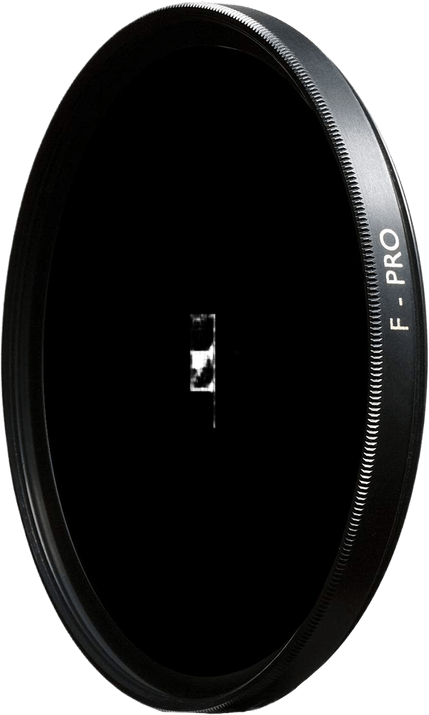
What Is the Best Infrared Filter?
Here is a quick roundup table of our top choices. Please read further for an in-depth look at each of our options. And look at our buyer’s guide at the end of the article with answers to some FAQs.
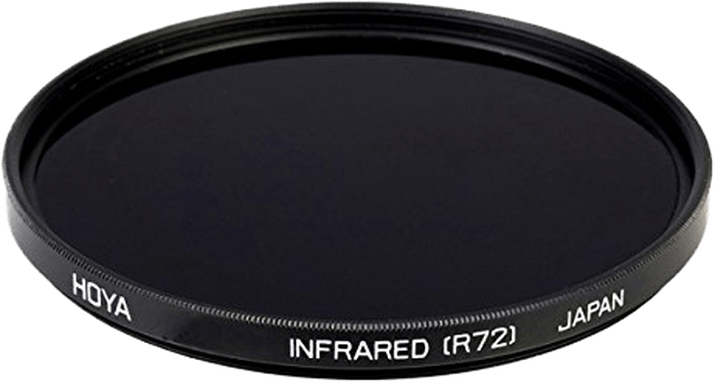
- Blocks all visible light up to 720nm
- Variable filter factor depending on ISO sensitivity and lighting conditions
- High-quality optical glass
- Can be paired with other filters for color and contrast effects
- Designed for infrared photography with digital cameras and IR film

- Passes light at 720nm and above
- Cokin filter holder included
- Gives more predictable results
- Creates surreal landscape photos
- Designed for digital cameras and infrared film

- Blocks visible spectrum up to 650nm
- High-quality glass for optical clarity and accurate colors
- Transmits 50% of radiation just below 700nm
- Passes over 90% of radiation from 730 to 2000nm
- Well built and comes with a protective sleeve
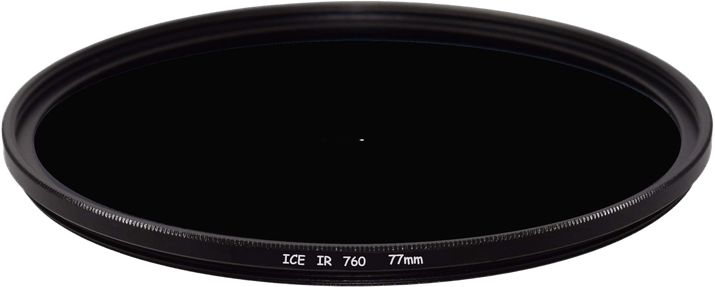
- Blocks all visible light up to 760nm
- Black-rimmed quality optical glass
- Metal, double-threaded frame for other filters
- Ideal for wide-angle lenses
- Affordably priced

- High-transmission infrared optical glass
- High-quality polished optical glass
- Available in 49 to 95mm thread sizes
- Standard front and back threading
- Lifetime guarantee against defects
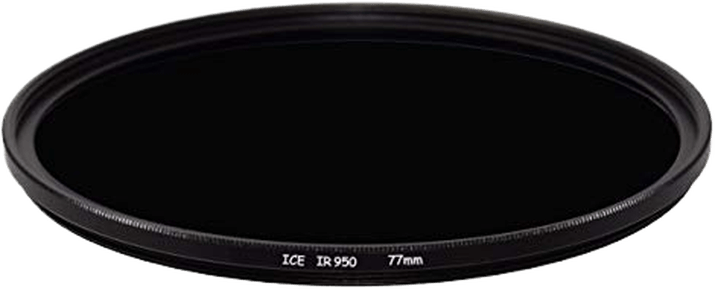
- Blocks visible spectrum up to 950nm
- Optical glass and screw-in filter
- Metal, double threaded frame
- Ideal for wide-angle lenses
- Reasonably priced
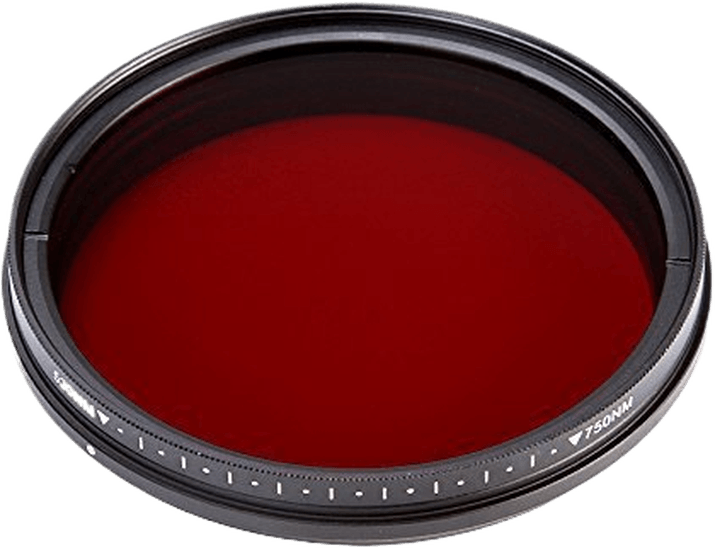
- Adjustable Infrared filter for 530n to 750nm range
- Blocks visible light and UV wavelengths
- Offers precise shots with wavelength index marks
- Compact and adjustable with just a twist
- Ideal for plant, vegetation, and landscape photography
7 Best Infrared Filters
Infrared filters are measured by the wavelengths of visible light they block out. You will notice that the measurement used is “nm.” This stands for nanometer. And this directly references the wavelengths of infrared light.
720nm is considered a standard IR filter. A high-transmission filter is indicated by a lower number. And a low-transmission infrared filter has a higher number.
1. Hoya R-72 Infrared Filter

| Brand |
Brand
Hoya
|
| Filter Type |
Filter Type
Circular
|
| Thread Sizes |
Thread Sizes
46mm, 49mm, 52mm, 55mm, 58mm, 62mm, 67mm, 72mm, 77mm
|
| Blocks Light Up To |
Blocks Light Up To
720nm
|
| Key Features |
Key Features
High-quality glass, good selection of thread sizes, can pair with color contrast filters
|
| Best For |
Best For
All photographers looking for a great-value infrared filter
|
The Hoya R-72 range is an infrared filter that blocks all visible light up to 720nm. This is a circular filter that screws onto your camera lens. It has a strong build quality, is easy to use, and creates other-worldly results.
One of the most notable points about this range is its wide selection of sizes. This means you will likely find one that matches the diameter of your favorite lens.
Infrared light starts at the higher end of the red area in visible light, beginning at 750nm. So this filter allows you to photograph the entire range of infrared light.
Hoya is well known for producing professional-standard filters. And this is no different when looking at their infrared filters.
You can also pair it with color contrast filters, such as the R25 (red), K2 (yellow), O (orange), or other color filters. This modifies the color rendition or contrast effects.
The R-72 is the best infrared filter if you want a simple filter that performs to a high standard. With a price like this, it is worth investing in, even if you’re a novice. But it also suits professionals with high-quality results!
2. Cokin Square Filter Infrared Creative Kit

| Brand |
Brand
Cokin
|
| Filter Type |
Filter Type
Circular
|
| Thread Sizes |
Thread Sizes
Medium, Large (Will need to buy a lens adapter ring)
|
| Blocks Light Up To |
Blocks Light Up To
720nm
|
| Key Features |
Key Features
Comes with a filter holder that makes it easy to stack other Cokin filters
|
| Best For |
Best For
Photographers who want one filter for a range of lenses or don't like screw-on filters
|
The Cokin square filter infrared creative kit comes a close second. This infrared filter also blocks light up to 720nm, covering the full infrared spectrum. I am a big fan of this selection as it is available for a great price!
Cokin is another well-established filter manufacturer. And this filter set comes with an infrared filter and a Cokin P-series holder.
The infrared filter will fit in the filter holder, but you must buy an attachment for your lens. You can pick these up for cheap. And it means you only need one infrared filter to fit a range of lens sizes.
So the Cokin infrared square filter kit is convenient if you want to use different lenses or filters out on location with your landscape camera.
It comes in three sizes. There’s medium (84 x 84mm), large (100 x 100mm), and extra large (130 x 130mm). These correspond to the diameter of your lenses. So check the diameter of the lenses you want to use them with most before buying.
3. B+W Infrared Filter 092 (89B)

| Brand |
Brand
B + W
|
| Filter Type |
Filter Type
Circular
|
| Thread Sizes |
Thread Sizes
49mm, 52mm, 55mm, 58mm, 62mm, 72mm, 77mm
|
| Blocks Light Up To |
Blocks Light Up To
650nm
|
| Key Features |
Key Features
Optical clarity, accurate color, well built with strong material, protective sleeve
|
| Best For |
Best For
Professional photographers
|
The B+W infrared filter 092 (89B) is built for professionals. The first clue is its price point. But we can also see the optical quality in every millimeter of this filter.
It is constructed from strong materials and comes in a secure sleeve to protect it when it’s not in use.
This infrared filter will look violet when held up to the light. It can block all visible light up to 650nm. It can also let 50% of radiation pass through. That is just below 700nm. This means it can get to the lower end of the infrared spectrum.
It can also let through greater than 90% of the radiation from 730-2000nm. This allows for more detail in the spectrum hidden from the visible eye.
The 092 (89B) by B+W is best for those who want to strictly perform black-and-white photography with their infrared filters. But it also works great for color photography, producing accurate colors.
I recommend IR filter this to professional photographers who take experimentation seriously. If you are dipping your toe into infrared photography, choose one of our other top choices.
4. ICE Infrared Filter 760nm

| Brand |
Brand
ICE
|
| Filter Type |
Filter Type
Circular
|
| Thread Sizes |
Thread Sizes
43mm, 49mm, 52mm, 55mm, 58mm, 62mm, 72mm, 77mm, 82mm, 95mm, 105mm
|
| Blocks Light Up To |
Blocks Light Up To
760nm
|
| Key Features |
Key Features
Double-threaded, a wide variety of thread sizes
|
| Best For |
Best For
Beginner photographers, or those who may have a niche lens diameter
|
The ICE 760nm infrared filter is another option as one of the best infrared filters. You can use this filter with both film cameras and digital cameras. One great feature is that it is double-threaded! This allows you to screw another filter over this infrared filter.
Because the filter is so dense, you need to frame and focus your shot before putting on the filter. But the image quality you get from this filter is superb for its price.
You may find some crosses when looking into the sun at particular angles. But this is rare and is expected from cheaper filters.
This 760nm infrared filter comes with a light aluminum frame. And like many infrared filters on this list, you will also notice the filter is uncoated. This allows for better clarity in the infrared spectrum.
I suggest this filter for beginners who want a cheap filter to experiment with.
5. Kolari Vision Infrared Filter

| Brand |
Brand
Kolari Vision
|
| Filter Type |
Filter Type
Circular
|
| Thread Sizes |
Thread Sizes
49mm, 52mm, 55mm, 72mm, 77mm, 82mm, 95mm
|
| Blocks Light Up To |
Blocks Light Up To
590nm, 665nm, 720nm, 850nm
|
| Key Features |
Key Features
Various densities (colors), front and back threading, scratch resistant
|
| Best For |
Best For
Professional infrared results
|
The Kolari Vision infrared filter is a great option for choosing between various densities (colors) and sizes. They are expensive. But each filter comes with a lifetime guarantee! So this is worth the investment if you use infrared filters regularly.
You may notice that the filter also includes extra threading. This allows you to attach different filters on top of the Kolari filter. Kolari says you can even put another infrared filter on top to produce a different effect.
Kolari offers various densities (colors), each producing a different effect. So be sure to determine the aesthetic you want to achieve before buying! Kolari has a great table that shows you the results of each IR filter density.
You can expect high quality from the Kolari Vision IR filter. This filter range is aimed at professionals who rely on maximum clarity and accurate color. Plus, it is scratch-resistant.
The lifetime guarantee is a bonus that solidifies this filter range as one of the best for professionals. It appears lower down on our list as it is more expensive.
6. ICE Infrared Filter 950nm

| Brand |
Brand
ICE
|
| Filter Type |
Filter Type
Circular
|
| Thread Sizes |
Thread Sizes
58mm, 67mm, 72mm, 77mm, 82mm
|
| Blocks Light Up To |
Blocks Light Up To
950nm
|
| Key Features |
Key Features
Blocks light at the higher end of the infrared spectrum, double threaded
|
| Best For |
Best For
Producing a different infrared effect
|
Now we have the ICE 950mm infrared filter. This density (color) differs from our fourth selection and will give you a different effect. This filter allows infrared light above 950nm to pass through.
Filters like this are designed specifically for black-and-white photography. You will notice that vegetation comes across as bright whites that look brilliant and surreal.
Photographers may want to delve into the deeper part of the infrared spectrum. And this filter provides you with the means to do that!
The ICE 950mm IR filter is another circular filter that provides threading on the front. This is extremely handy for those who want to push their creative possibilities.
The best part is that it is fairly inexpensive! This means you can invest in another infrared filter if you are not happy with the results this one produces.
I recommend this infrared filter to any photographer who wants to try a different side of the infrared spectrum!
7. Fotga Six-in-One Adjustable Infrared Filter

| Brand |
Brand
Fotga
|
| Filter Type |
Filter Type
Adjustable circular
|
| Thread Sizes |
Thread Sizes
43mm, 46mm, 49mm, 52mm, 55mm, 58mm, 62mm, 67mm, 72mm, 77mm, 82mm
|
| Blocks Light Up To |
Blocks Light Up To
530 to 750nm
|
| Key Features |
Key Features
Adjustable filter, wavelength index marks
|
| Best For |
Best For
Beginners who want a range of options
|
The Fotga six-in-one adjustable infrared filter lets you change the density (color)! This filter best suits beginners in photography who want to understand what infrared filters can do.
The bottom end of this filter range still takes into account visible light. So you only get a true infrared filter at the higher end of this range. But this can still be fun for photographic beginners as you are forced to experiment with white balance and color casts.
This six-in-one adjustable IR filter by Fotga seems like a great option. But it may not be worth having the range of density and color it uses. More experienced photographers are better off with a single density (color) to achieve the best infrared photos.
But this filter is great for beginners who want to experiment with infrared photography and photography itself. It even includes marks on the outer rim to show the exact wavelengths used. So you take precise and clear shots!
Infrared Filters Buyer’s Guide (FAQs)
Here are some common questions we get about infrared filters.
Which Filter Type Is Best for Infrared Filters? Circular or Square?
Circular filters are generally better for infrared filters. This is because they screw onto your lens, ensuring no light leaks. A small leak can dramatically change your image as you try to block out most of the visible light spectrum.
Square filters are generally better filters. But in this case, it is better to ensure a light-tight result.
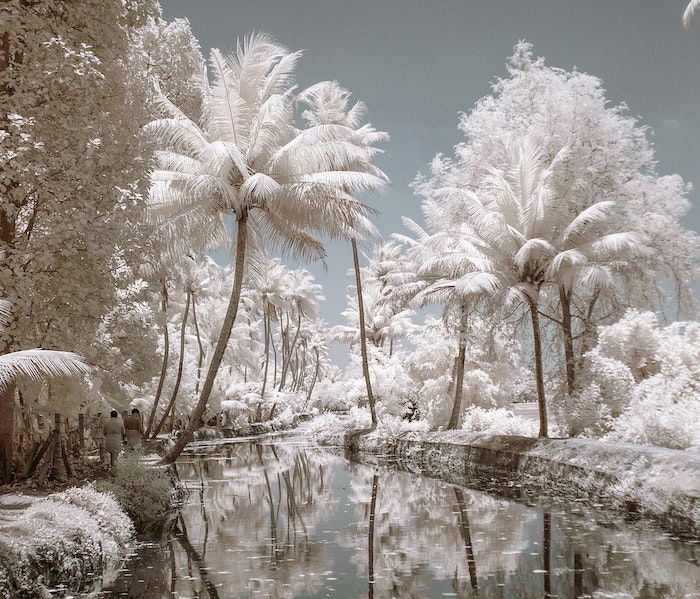
How Should I Frame and Focus My image With infrared Filters?
Infrared filters will block out as much visible light as possible. This means seeing your image through the lens with an infrared filter is almost impossible. So it helps to compose the shot before putting the filter on your lens.
Also, you should set the focus point before putting your filter on. You can do this with autofocus. But remember to switch the camera to manual focus after it is set. This ensures you don’t refocus the image when pressing the shutter.
When Should I Use an Infrared Filter?
Infrared filters produce a unique aesthetic. So there is no specific time to use them. But they dramatically change the appearance of vegetation. So you will want to photograph landscapes or other natural scenes for the best effects.
Use this guide from Kolari to help you understand infrared filters and the best way to use them. It has a great table that shows you the results of each color and density in infrared filters.
You can also read our articles on how to take infrared photos and how to edit infrared photos.
Conclusion: The Best Infrared Filters
If you’re looking for a great infrared filter for an incredible price, choose the Hoya R-72. But I recommend trying the Cokin infrared filter if the Hoya is out of your price range. And if you want professional results, choose the B+W infrared filter.
The Hoya R-72 is perfect for experimentation and will produce great results. It’s available in a range of thread sizes. And any photographer will enjoy shooting with this filter and its results!


